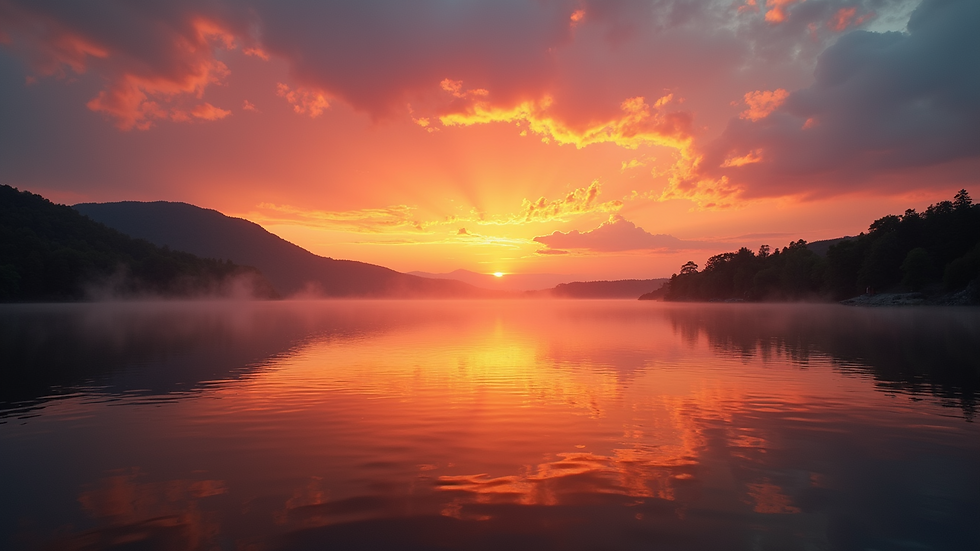Exploring Natural Art: Photography and Canvas Creations
- I.Am.Andrea LivingFreeLovingMe
- Aug 29, 2025
- 4 min read
Nature has a way of inspiring creativity. From the vibrant colors of a sunset to the intricate patterns of leaves, the natural world offers endless opportunities for artistic expression. In this blog post, we will explore how photography and canvas creations can capture the beauty of nature. We will discuss techniques, tips, and the joy of bringing the outdoors into your art.
The Beauty of Nature Photography
Nature photography is a powerful way to showcase the world around us. It allows us to freeze moments in time and share them with others. Whether you are a beginner or an experienced photographer, there are some key elements to consider.
Choosing the Right Equipment
While you don’t need the most expensive camera to take great photos, having the right equipment can make a difference. Here are some essentials:
Camera: A DSLR or mirrorless camera is ideal, but smartphones can also capture stunning images.
Lenses: A macro lens is great for close-ups, while a wide-angle lens can capture expansive landscapes.
Tripod: This helps stabilize your camera, especially in low light conditions.
Finding the Perfect Location
The location you choose can greatly impact your photos. Here are some tips for finding the best spots:
Local Parks: Often, parks have beautiful landscapes and wildlife.
Nature Reserves: These areas are usually less disturbed and offer a variety of subjects.
Gardens: Botanical gardens provide a colorful array of plants and flowers.
Timing is Everything
Lighting plays a crucial role in photography. The best times to shoot are during the golden hours, which are shortly after sunrise and before sunset. The soft, warm light during these times can enhance your images.
Techniques for Capturing Nature
Once you have your equipment and location, it’s time to focus on techniques. Here are some tips to improve your nature photography:
Composition
Good composition can elevate your photos. Consider the following techniques:
Rule of Thirds: Imagine dividing your frame into a grid of nine squares. Place your subject along these lines or at their intersections.
Leading Lines: Use natural lines, like paths or rivers, to draw the viewer’s eye into the photo.
Framing: Use elements in your environment to frame your subject, adding depth to your image.
Focus and Depth of Field
Experimenting with focus can create stunning effects. A shallow depth of field can blur the background, making your subject stand out. Conversely, a deep depth of field keeps everything in focus, which is great for landscapes.
Post-Processing
Editing your photos can enhance their beauty. Use software like Adobe Lightroom or Photoshop to adjust brightness, contrast, and color saturation. However, be careful not to over-edit; the goal is to enhance, not alter, the natural beauty.
Bringing Nature to Canvas
Once you have captured stunning photographs, you might want to translate that beauty onto canvas. Painting from photographs can be a rewarding experience. Here’s how to get started.
Selecting Your Photo
Choose a photograph that resonates with you. Look for images with strong composition and vibrant colors. This will serve as your reference for the painting.
Materials You’ll Need
Gather the following materials for your canvas creation:
Canvas: Choose a size that fits your vision.
Paints: Acrylics or oils are popular choices for landscape painting.
Brushes: A variety of brush sizes will help you achieve different effects.
Palette: For mixing colors.
Sketching Your Design
Before you start painting, sketch your design lightly on the canvas. This will help you plan the composition and placement of elements.
Painting Techniques
Here are some techniques to consider while painting:
Layering: Start with a base layer and gradually add details. This creates depth and richness in your work.
Blending: Use a dry brush to blend colors smoothly, especially in skies or water.
Texture: Experiment with different brush strokes to create texture in your painting.
The Joy of Creating
Creating art from nature is not just about the final product. It is also about the process. Engaging with the environment can be therapeutic. Here are some benefits of creating art inspired by nature:
Mindfulness
Spending time outdoors and focusing on your surroundings can promote mindfulness. It encourages you to observe details you might otherwise overlook.
Connection to Nature
Creating art allows you to connect with nature on a deeper level. You become more aware of the beauty and intricacies of the world around you.
Personal Expression
Art is a form of self-expression. Your unique perspective on nature can shine through in your photography and paintings.
Sharing Your Work
Once you have created your art, consider sharing it with others. Here are some ways to do so:
Social Media
Platforms like Instagram and Pinterest are great for showcasing your work. Use relevant hashtags to reach a wider audience.
Local Exhibitions
Look for local art shows or exhibitions where you can display your work. This can be a great way to connect with other artists and art lovers.
Online Galleries
Consider creating an online portfolio or gallery. This allows you to share your work with a global audience.
Final Thoughts
Exploring natural art through photography and canvas creations can be a fulfilling journey. It allows you to capture the beauty of the world and express your creativity. Whether you are behind the camera or holding a paintbrush, the process can be both enjoyable and rewarding.
So, grab your camera or your paints, and step outside. The beauty of nature is waiting for you to capture and create. Embrace the adventure, and let your artistic spirit soar.



Comments